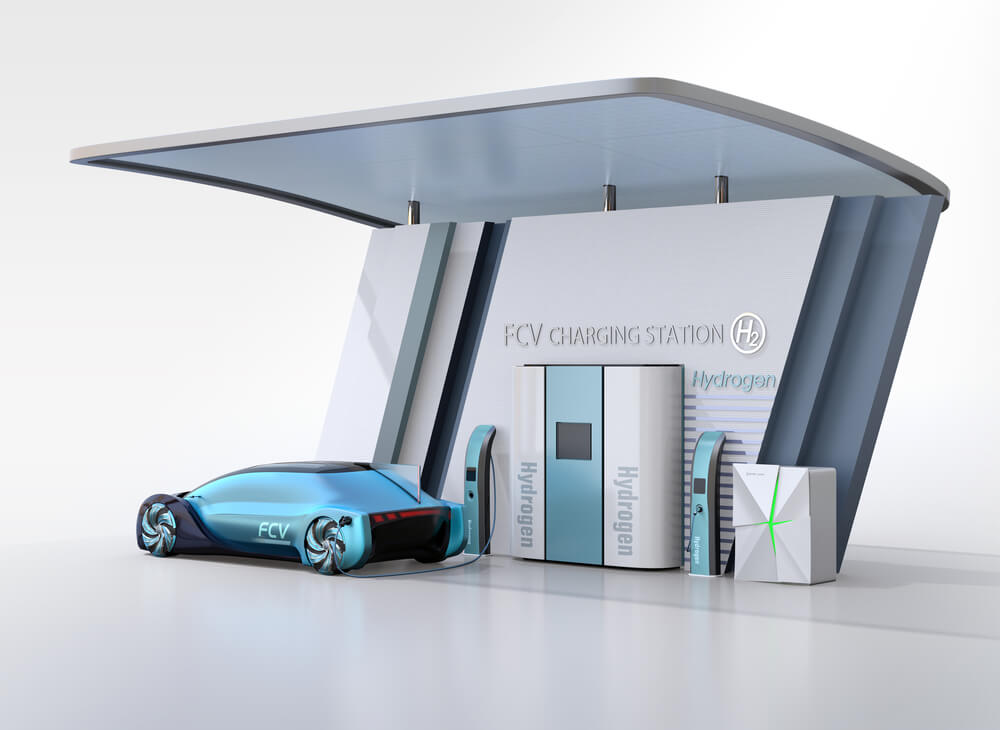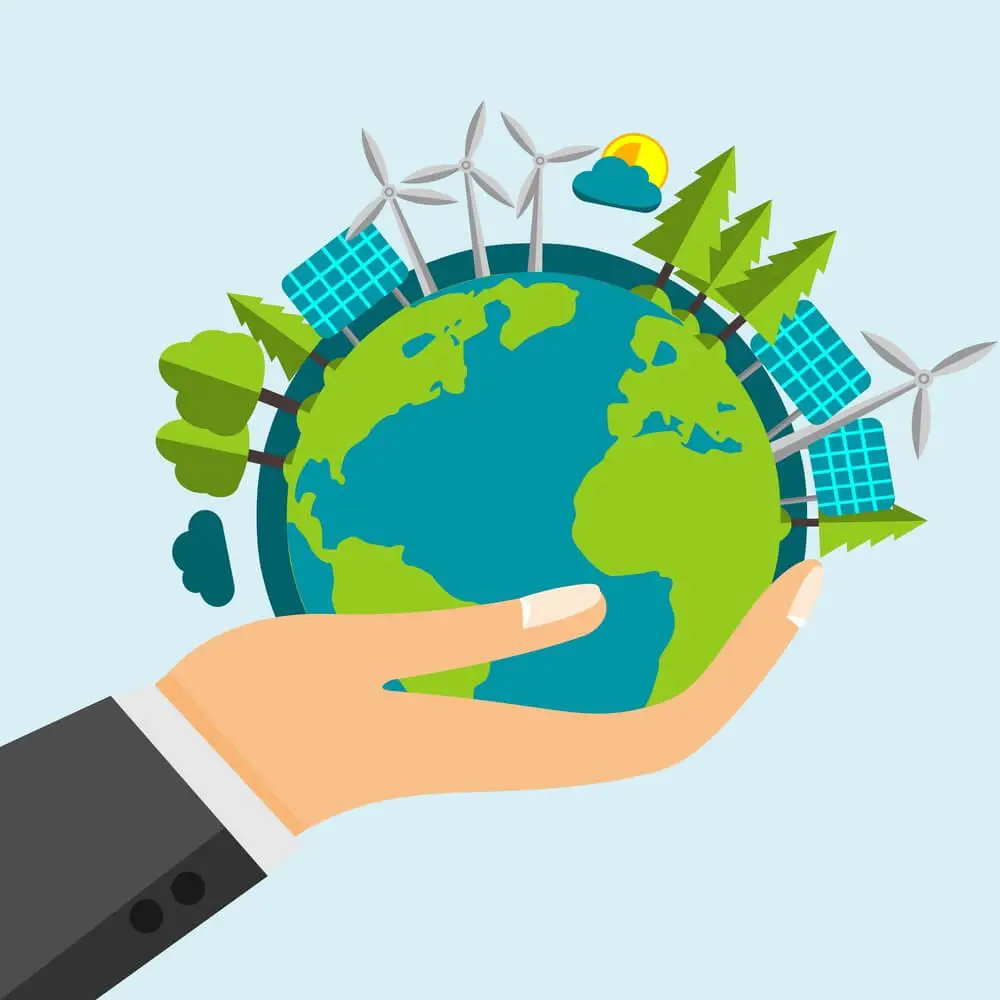Fuel cells generate energy by converting available fuel, and they’re becoming more popular for many good reasons.
Their ability to solve some of the devastating problems in energy provision is adorable. This technology can add to every state’s diverse energy mix.
But is fuel cell renewable energy? The answer is yes.
A fuel cell is a technology that produces clean electricity through an electrochemical process, not combustion.
The process involves hydrogen combining with oxygen to generate ‘green’ electricity, water, and heat.
Both oxygen and hydrogen are readily available so they’ll continuously combine to provide electric energy.
Here we’ll discuss why fuel cell is renewable energy:
Fuel Cell as Renewable Energy
Just like batteries, fuel cells generate electricity without combustion.
They also don’t have carbon emissions that may impact the environment negatively.
In contrast, fuel cell power doesn’t drain or need recharging though.
These technologies will provide electricity for as long as the hydrogen and oxygen supply is constant.
Oxygen and hydrogen react in an electrochemical process to produce electricity, heat, and water.
Even during electrolysis (the reverse process), clean hydrogen and oxygen get generated from water.
Electrolysis is a high-energy process. So it can use various renewable energy sources like solar, wind, and wave to generate ‘clean’ hydrogen.
There are also zero pollutants emitted from the process, not just water.
Green hydrogen facilitates the production of renewable energy without emissions.
Hydrogen stands out as the most abundant element in the universe.
On planet earth, hydrogen doesn’t occur naturally as a gas. It always combines with other elements in the atmosphere.
In short, hydrogen exists in larger quantities in water, hydrocarbons, and other organic matter.
Hydrogen sources are also diverse and may include:
- Fossil fuels
- Biomass
- Electrolysis of water using solar, wind, or grid electricity
With a 21% concentration, oxygen is the second most abundant gas in the earth’s atmosphere.
Therefore, a fuel cell is the source of renewable energy as both hydrogen and oxygen are readily available.
A fuel cell will continue generating electricity provided hydrogen and oxygen are sufficient in supply.
It’ll never lose its charge!
Fuel cell technologies are thereby suitable for generating heat and electricity for households and buildings.
They also produce electrical power for propelling electric motors in vehicles and machinery.
Fuels such as methanol, gasoline, or natural gas can undergo reformation to generate hydrogen needed for fuel cells.
Some fuel cells can use methanol for hydrogen generation without reformation.
Hydrogen will soon be an essential energy carrier, just like electricity. And an energy carrier transports and supplies energy for use by consumers.
Sun and wind are some of the common renewable sources of energy.
However, they won’t always produce energy.
But they can generate hydrogen and electric power, which both act as a storage medium for use when the need arises.
The energy kept as hydrogen, either as a liquid or a gas, will never go to waste until it’s time to use it.
Because of this, it is an excellent option for emergency generators and other vital energy applications.
Like electricity, hydrogen is transferable to areas where it’s needed.
So with a fuel cell, you can have electricity anytime you want. Again, no recharging!

How do Fuel Cells Work?
A fuel cell has a different style of operation from combustion engines.
It converts electrochemical energy straight into electricity.
The electricity generated can then power various electrified systems.
Besides, the conversion process is highly efficient and relies on oxygen and hydrogen to produce electricity, water, and heat. A fuel cell has three main parts:
- Anode
- Cathode
- Electrolyte membrane
Here’s how it works:
- Hydrogen atoms enter the cell’s anode
- A catalyst breaks down the hydrogen molecules into protons and electrons
- Protons (positively charged) move to the cathode via a porous electrolyte membrane
- Electrons (negatively charged) get forces to pass through a circuit to generate electric current and excess heat
- The electrons then combine with the protons and oxygen supplied by the air to produce heat and water molecules (fuel cell’s byproducts)
Fuel cells work silently and with excellent reliability as they don’t have moving parts.
Is Fuel Cell Power Environment-friendly?
Yes, fuel cells are environmentally-friendly. Most of these devices use pure hydrogen as their fuel. As a result, they are carbon-free.
And their byproducts are electricity, water, and heat – no greenhouse gases or emissions get produced.
Some fuel cell systems can use hydrocarbon-based fuels such as biogas, natural gas, methanol, and more.
Even with fossil fuels used as fuel, the emissions are much less than modern fossil fuel generation technologies.
These technologies also generate electricity through an electrochemical reaction, making them highly efficient and clean. Plus, water electrolysis produces green hydrogen and excess heat as byproducts.
A fuel cell can combine with an electric system to use the heat generated for heating applications.
Fuel cells Advantages and Disadvantages
Hydrogen fuel cells offer us economical and environmentally friendly ways to meet our energy demands. Below are the advantages and disadvantages of fuel cells as a renewable energy source:
Advantages
- Highly efficient: They have a high energy generation ability
- Environmentally friendly: Electricity generation has less to zero emissions
- A reliable source of clean energy: The electrochemical process needs oxygen and hydrogen, which are readily available
- Flexible: The cells can obtain hydrogen from various resources
- Durable: Fuel cells generate electricity for as long as oxygen and hydrogen are available
- Energy security: Hydrogen used can store energy in gas or a liquid for longer periods.
- Quieter operation: That’s because they lack movable parts
- Highly scalable: They can combine to form larger systems for added efficiency
Disadvantages
- Hydrogen is expensive as it is time-consuming to separate it from other forms.
- Storing and transporting hydrogen is challenging and also expensive
- Hydrogen used is highly flammable, hence risky
Conclusion
Fuel cell renewable energy? Yes. The device uses hydrogen and oxygen to generate highly efficient, reliable, and clean energy through an electrochemical reaction.
These compounds also exist in abundance, meaning that the fuel cells will never run out of power.
More impressively, the technology is clean and results in less to zero-emission hence environmentally friendly.






